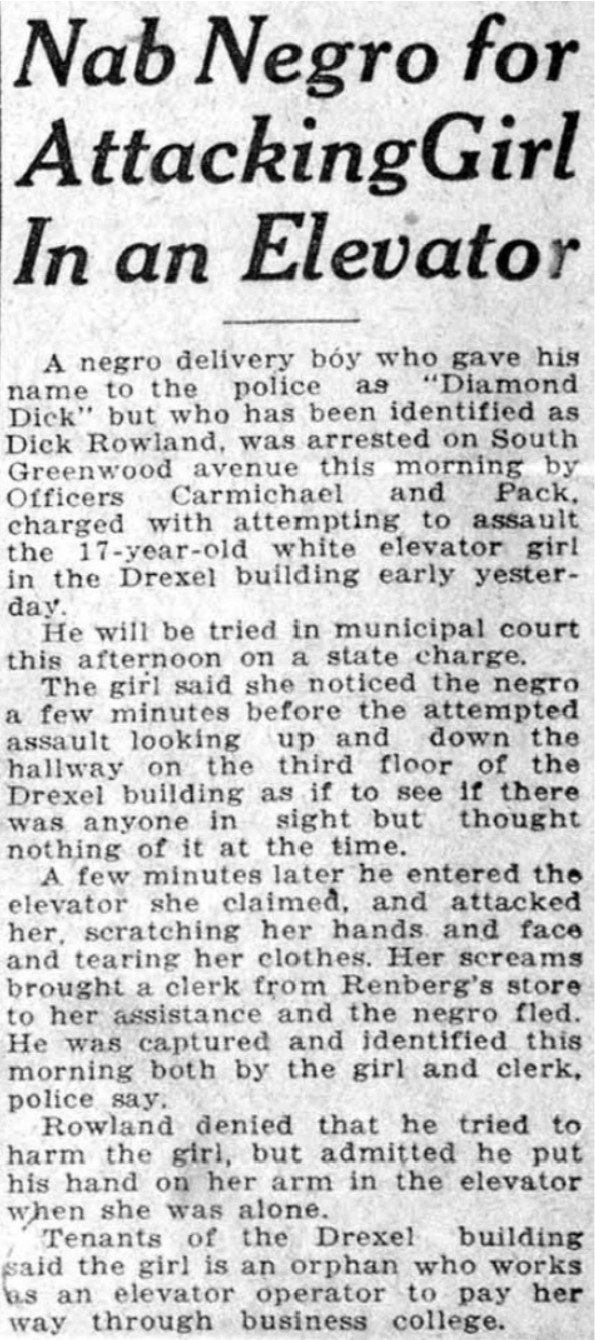May 31, 1921.
Over 100 years later, it is an infamous date that lives not just in the minds of those in Tulsa and Oklahoma, but in the consciousness of a nation.
This level of awareness is a relatively new development, however. Far too many, for far too long, were shielded from its history.
On that fateful May day, when a white mob attacked, lynched, burned, and massacred their way through Tulsa’s Greenwood District, a ripple was created. A ripple that proceeded in darkness, as its story was ignored, covered up, and left for dead by those made uncomfortable by its truths.
"The history of what happened was buried by design. By the city. By the state. For almost a century.”
Quraysh Ali Lansana
But the ripple proceeded nonetheless.
You can’t turn your back on history. It has a way of a reminding you. The phrase “history repeats itself” is a little misleading. The axiom aught to be “too often history is allowed to repeat itself.”
Because the darkness of our shared past can be overcome. We do not have to let these ripples fester and build until the tidal wave of history overwhelms us, as long as we continue to shed light on the realities that caused them.
The Oklahoma Education Association has curated resources to help educators, students, parents, and all community members help understand these tremors of our past and how they still reverberate today.
Black Wall Street

Greenwood, an area just north of the Frisco Railroad yards in Tulsa, was a predominantly Black community thriving in 1921.
Hannibal B. Johnson, author of “Black Wall Street 100: An American City Grapples With Its
Historical Racial Trauma,” referred to the district as more of a “Black Main Street” than “Black Wall Street.”
“In early Greenwood,” Johnson said, “you could find movie theaters and dance halls, pool halls, barber shops, beauty salons, hotels, rooming houses, confectionaries, jitney services, a haberdashery, laundries, restaurants, grocery stores — all manner of small business, coupled with service providers. Doctors, lawyers, dentists…”
This live embodiment of a successful, self-sustaining Black community led to resentment among poorer white people in the region. And on May 31, 1921, that resentment made a violent progression.
The Riot Massacre
“I could see planes circling in mid-air. They grew in number and hummed, darted and dipped low. I could hear something like hail falling upon the top of my office building. Down East Archer, I saw the old Mid-Way hotel on fire, burning from its top, and then another and another and another building began to burn from their top,”
Buck Colbert Franklin (1879-1960)
Monday, May 20, 1921, began like any other Memorial Day in Tulsa.
However, by the end of the day June 1, over, 10,000 Black people were made homeless, millions of dollars in property were destroyed, and hundreds were killed.
It started when a Black shoe-shiner was accused of placing his hand on a white elevator operator’s arm, which was publicized as an “assault” by a Black boy on a white girl in the press. A white mob was formed and assembled around the courthouse to pressure the sheriff into handing the accused boy over to a lynching.
After a scuffle and firefight with a group of Black residents who came to stop the lynching, the white mob stalked the group back to the Greenwood district, looting stores and shooting Black people along the way, with many rioters reportingly receiving aid from law enforcement. The situation would eventually escalate into an all-out war zone, when the attacks started coming from planes performing an aerial assault on Greenwood.
The violence would not cease until Martial Law was declared on June 1, 1921.

The Oklahoma state legislature published a report in 2001, which stated the city did conspire with the mob of White citizens against Black citizens and recommended a program of reparations to survivors and their descendants.
Americans had been bombed from the sky and hunted in the street by their government and fellow citizens, because of the color of their skin.
Reverberations
The total number of deaths has been a matter of speculation for a century. Estimates range from 55 to 300 people killed during the massacre, the majority being Black. The Red Cross reported an additional 531 wounded required surgery, largely for gunshot wounds and burns, and a total of eight miscarriages caused by the attack.
What was once a bustling district filled with the noises and pageantry of a thriving community was now smoldered by ash and silence. 1,256 homes, 191 businesses, multiple churches, a school, and the only hospital in the area were all destroyed by the mob. The total number of homeless in Oklahoma grew by 10,000 in a matter of hours.
"God grant that, in the soberness, the fairness, and the justice of this country, we never see another spectacle like it."
President Warren G. Harding
Despite gaining national headlines and garnering attention from the president, the massacre that shocked a nation was quickly and strategically ignored by those whom it made uncomfortable.
Survivors and advocates never ceased in their mission to shed light on what happened — what really happened — and honoring the victims who once called Greenwood home.
Thanks to their continued efforts for literally a century, public awareness is shifting. The Tulsa Race Massacre has taken hold of America’s attention. A sitting president visited Tulsa on June 1, 2021 to commemorate the 100th anniversary and the massacre was even featured in the opening scene of the HBO series The Watchmen.
Below you will find those stories, along with reading lists, lesson plans, podcasts, and various resources to help ensure this history is never forgotten.
Resources
Videos
Reading List
Podcasts
Please contact Joe DuVall at jduvall@okea.org with any additional resources.
